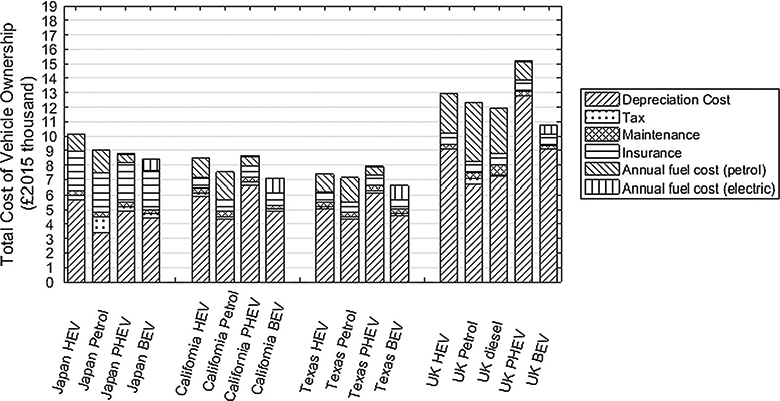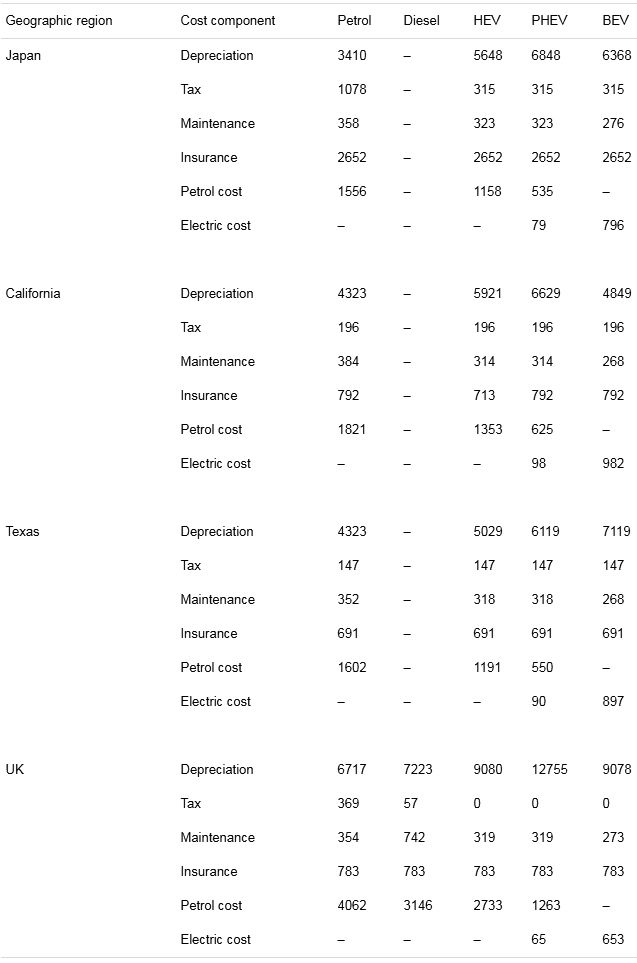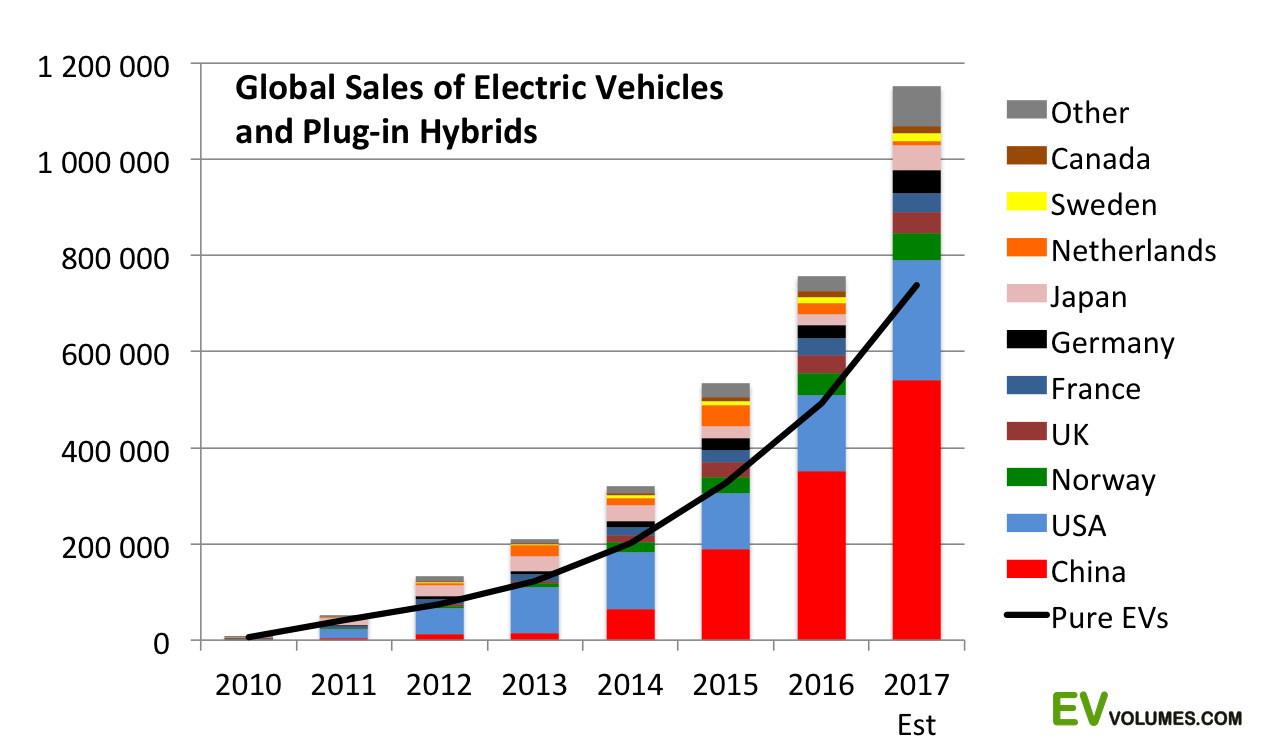Electric cars in Western countries are already cheaper ICE

The average cost of ownership of different types of cars in 2015 by region: cars with a hybrid power plant (HEV), engine (petrol), plug-in hybrids (PHEV) and electric cars (BEV)
Expensive fuel, expensive maintenance and the lack of subsidies are the three main reasons why cars with internal combustion engines are already more expensive than electric cars. The study showed that this is true for the UK, Japan and at least two US regions for which complete statistics on the cost of ownership are available.
Researchers have collected data for four years at the cost of owning four types of cars: with a hybrid power plant (HEV), internal combustion engine (petrol), plug-in hybrids (PHEV) and electric vehicles (BEV). It turned out that electric cars come out the cheapest in all four markets where the study was conducted.
The cost of ownership took into account the following factors:
')
- purchase cost and depreciation;
- the cost of gasoline (electricity);
- insurance;
- tax;
- service.
Electric cars are cheaper, even though initially they have a higher cost. The main reason is fuel savings. Even in America and Japan, the cost of electricity is much lower than the cost of gasoline for refueling gasoline vehicles.
Electric vehicles also have lower maintenance costs, since they have much simpler engines. There are fewer moving parts. Engines are generally more reliable, and even in the event of a breakdown, repairing them is cheaper. According to this indicator, the highest costs have to be borne by the owners of the plug-in hybrids, because in these cars the engine runs: electric and internal combustion engines. Although this gives savings on fuel (at low speed, the hybrid moves on electric), but in fact you have to bear the cost of repairing not one, but two engines.
Another reason for the lower cost of servicing electric cars is the lower load on the braking system, since these cars can not only brake the brake pads, but often brake by the engine.
For example, in the UK, the cost of servicing electric cars in 2015 was about 10% lower than gasoline or diesel cars. Specific data on the cost of ownership for illustration at the beginning of the article are shown in the table below (in pounds sterling).

It should be noted that, without taking into account government subsidies, the cost of ownership of cars with internal combustion engines in almost all regions is still lower than that of electric vehicles. In the UK and Japan, the government subsidy when buying an electric vehicle is about $ 6,700, and in the US - about $ 8,700.
But government subsidies are essential in the first stage of promoting clean transport. Everyone understands that lithium-ion batteries are getting cheaper every year, as well as other components of an electric vehicle with the start of mass production. That is, the task of the state is to stimulate the transition to mass production and create an infrastructure (a network of electric charging stations). For example, the UK recently approved the allocation of 200 million pounds (the same amount should be paid by industry players) to expand the network of charging stations. Now there are 11,500 public charging stations in the country, including 900 fast-charging stations.
After the deployment of infrastructure and the start of production of cheap mass-produced electric vehicles, it is possible to stop state support, because electric vehicles will become cheaper for internal combustion engines at the cost of ownership and without subsidies.
The authors of the research note the fact of relatively high subsidies, which are compensated by the state at the moment. But they predict that subsidies will soon begin to be abolished. According to James Tate from the University of Leeds, one of the authors of the study, electric cars like the Nissan Leaf will be cheaper than ICE machines for cost of ownership by 2025 without subsidies. According to Renault, this will happen in the early 2020s .
Sales of electric vehicles in the world are growing in geometric progress (see chart). According to analysts, they will exceed sales of cars with a diesel engine by May 2019.

At the moment, the demand for electric cars significantly exceeds supply worldwide.
The scientific article will be published on January 1, 2018 in the journal Applied Energy (the online version is available now, doi: 10.1016 / j.apenergy.2017.10.089).
Source: https://habr.com/ru/post/374061/
All Articles